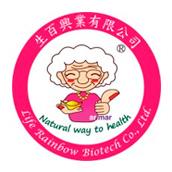Managing Aflatoxins in Corn
Aflatoxins in Corn
Published: September 12, 2012
By: Originally prepared by Dr. Gary Munkvold, extension plant pathologist. Updated by Charles Hurburgh, professor of agricultural and biosystems engineering; Dan Loy, professor, animal science and Alison Robertson, extension plant pathologist(Iowa State University)
Aflatoxins are a group of chemicals produced by certain mold fungi. These fungi, Aspergillus flavus and Aspergillus parasiticus, can be recognized by olive green or graygreen, respectively, on corn kernels, in the field or in storage (Figure 1). Although aflatoxins are not automatically produced whenever grain becomes moldy, the risk of aflatoxin contamination is greater in damaged, moldy corn than in corn with little mold. Aflatoxins are harmful or fatal to livestock and are considered carcinogenic (cancer-causing) to animals and humans. In the Midwest, aflatoxin levels are highest during hot, dry summers. The prime conditions for the fungus to produce toxin are warm (>70°F) nights during the latter stages of grain fill (August/September) in a period of drought.
In high-risk years, aflatoxin screening may be done at the elevator or where the corn is marketed. Rapid, on-site tests can determine the possible presence of aflatoxin, but they do not provide specific quantitative results. The toxins are produced inside the corn kernels and their presence can be determined only by specific analytical tests. Because aflatoxin levels can vary greatly from kernel to kernel, sampling the load, bin, or unit of grain is the most critical step in determining actual levels of aflatoxin.
How to sample corn for aflatoxin testing
Because aflatoxin does not occur uniformly through a lot of grain and is usually localized in a small area, the best approach is to make a composite sample consisting of subsamples from every part of a load, bin, or unit of corn. The recommended procedure is to sample periodically from a moving stream, combining these samples to obtain a composite sample of at least 10 lb of corn. An alternative is to sample with a probe through a storage unit (five perimeter samples and one center sample for each 6 feet of bin height). In the field, sample individual fields or parts of fields separately. Grain in trucks can be probed in the same way to collect samples of at least 5 lb per truck.
Fields that vary in cropping history, tillage practices, planting date, soil type, or hybrid can differ greatly in aflatoxin vulnerability. Sample a minimum of 10, preferably up to 30, locations within each field. To reach the same sampling frequency as testing grain in trucks, collect one sample (5-10 lb) for about every 5 acres. Immediately dry samples to 12–14 percent moisture to prevent aflatoxin development during transit or storage. High-moisture samples should be frozen and delivered to the laboratory in the frozen state. Dried samples maintain their quality best if shipped in cloth or paper containers.
Figure 1. Aspergillus ear rot symptoms on corn ear (left) and growth of Aspergillus flavus in artificial culture (right).

How to test for aflatoxin
The number of contaminated kernels in a sample, and the level of contamination in those kernels can vary widely. Thus great sampling variability exists; methods that minimize this variability should be used.
Two types of screening tests are often used: blacklight tests and commercial test kits. The blacklight (also called ultraviolet light) test is a quick preliminary test that is a visual inspection for the presence of a greenish gold fluorescence under light at a wavelength of 365 nm (nanometers). The greenish gold fluorescence looks like a firefly glow, and indicates the presence of an acid that is produced by actively growing A. flavus in the kernel. However, remember that this test is an initial screening for the presence of the fungus, NOT the toxin, and the results must be verified by laboratory analysis. If there are less than eight glowing particles per 5 lb sample, this does not guarantee that the sample is free of aflatoxins, nor is it certain that the same count will work in future outbreaks. Furthermore, kernels with glowing particles are not necessarily the ones contaminated with aflatoxin. Screening indicates which samples could need further testing, and is potentially an initial rapid sorting for high throughput grain handling.
Commercial test kits with immunoassay or ELISA techniques are available for on-site tests for aflatoxin. Immunoassay analysis is based on the detection of specific proteins found in aflatoxins using antibodies to identify these proteins. The tests are very specific for aflatoxin, but they require operator training and practice to be accurate. Some tests determine only the presence or absence of aflatoxin; others can quantify, within a range, the amount of aflatoxin present. If a lot of corn is rejected based on the results of an immunoassay test kit, the results also should be confirmed by laboratory analysis. It is very important that the entire 5- to 10-lb sample is ground before removing the small subsample for the test kit. This reduces sampling error, although one can assume a 25 to 40 percent overall error on any test result for aflatoxin. Subdivision of 5- to 10-lb samples prior to grinding is a major source of error. Detected levels of aflatoxin in subsamples taken prior to grinding the 5- to 10-lb sample results most often in low levels of aflatoxin being detected with occasional very high levels.
Analytical laboratories use one of several procedures such as thin-layer chromatography, mini columns, gas chromatography, or mass spectroscopy to determine aflatoxin levels. These procedures are highly accurate and quantitative. The laboratory should grind the entire 5- to 10-lb sample of corn together before taking subsamples for analysis.
Corn and feed samples can be sent to official USDA–FGIS (United States Department of Agriculture– Federal Grain Inspection Service) laboratories, or to a private laboratory. The ISU Veterinary Diagnostic Laboratory analyzes samples submitted through a veterinarian. Contact your local extension office or go to www.iowagrain.org for a current list of public and private laboratories equipped for aflatoxin analysis.
Regulations regarding aflatoxin in corn
The Food and Drug Administration (FDA) has established an "action level" of 20 ppb for aflatoxins in corn in interstate commerce. This is the level at which federal agencies may take action, including seizure of the corn or prohibition of its sale. Elevators do not accept corn with 20 ppb or more of aflatoxin unless they have a known use for the particular level of aflatoxin. Even one highly contaminated kernel in a 5-lb sample could result in more than 20 ppb aflatoxin. The FDA has guidelines for using contaminated grain in livestock feed (Table 1). These guidelines are based on maintaining performance and avoiding disease related to aflatoxin, except for dairy cattle in which prevention of aflatoxin residues in milk is the concern. Pet food is also of great concern because of the greater sensitivity of dogs and cats.
Table 1. FDA guidelines for acceptable aflatoxin level in corn based on intended use (www.fda.gov).

Consequences of high concentrations of aflatoxin in corn
Aflatoxins are very potent compounds that cause a variety of human and animal health problems. On rare occasions, livestock can die from ingesting aflatoxin-contaminated feed. Pets also have died on several occasions in the past 20 years. Most commonly, aflatoxin reduces the feed efficiency and reproductivity of livestock. It can suppress the immune system of animals, leading to more frequent occurrence of infectious diseases. Unfortunately, the most abundant aflatoxin, aflatoxin B1, is a carcinogen. This raises human health concerns because aflatoxin can appear in the milk of dairy cows fed contaminated corn.
How to prevent aflatoxin in corn
In Iowa, problems associated with Aspergillus and aflatoxins are most common in hot, dry years. The fungus survives in crop residue and soil, and produces abundant spores throughout the growing season. Infection of corn by A. flavus and consequent disease development is favored by hot (>86F) dry conditions at pollination and during grain fill. Yellow-brown silks are most susceptible to infection. Injury by insects, hail, drought stress, and early frost expose the kernels to infection. Insects can help spread the fungus within infected ears.
Aflatoxin is a secondary metabolite that is produced by A. flavus under certain conditions. Drought and high temperatures (80 to 105°F) during grain fill are the most common factors associated with pre-harvest aflatoxin production. Warm nights (>70°F) may also increase risk of aflatoxin contamination. Toxin production depends on kernel moisture and temperature. As kernel moisture decreases, aflatoxin production increases. Toxin production is highest at 20 to 18 percent kernel moisture and stops at around 15 percent moisture. The optimum temperature range for aflatoxin production is 77 to 95°F, although production can occur over a wider range of temperatures (52°F to 104°F).
The key to preventing ear rot and storage mold problems is detecting them early, in the field and in the bin. The following practices can reduce the risk of aflatoxin contamination in grain:
1. Control insects in the field. Second-generation European corn borers and corn earworms damage the ears, allowing for infection.
2. Scout. Early detection can prevent serious losses and avoid crises. Obtain good advance information as to the potential in your area. Scout for aspergillus ear rot from dent through to harvest at 5 to 10 locations in a field. Target areas of the field with plants that appear most stressed. At each location, peel back the husks of 10 ears and inspect them for olive-green powdery mold that is characteristic of the ear rot. If greater than 10 percent of the ears show signs of Aspergillus ear rot, schedule the field for an early harvest. Contact your crop insurance carrier if applicable.
If you harvest early based on the presence of Aspergillus ear rot, collect a sample of grain at harvest, as described on page 1, and send to a laboratory for aflatoxin analysis. A list of registered laboratories is available at www.iowagrain.org. The suspect corn should be stored in separate storage until the test result is known; then handle the corn appropriately for the level of aflatoxin you have. Corn from early harvest fields should be dried and cooled immediately to prevent further toxin development. If you have crop insurance, the early harvest and sampling should be coordinated with your insurance adjuster to prevent further growth in check strips waiting for adjustment.
3. Adjust the combine to minimize kernel damage. Storage fungi infect damaged kernels more easily than intact ones.
4. Clean bins and grain-handling equipment and remove fines from the corn before storing. Grain debris and dust that collect from storage of grain from a previous season are frequently a source of contamination.
5. After the harvest, sound clean corn can be kept at 16 or 17 percent moisture during the winter. Moldy corn should be dried immediately to 15 percent moisture or less. Holding wet grain for even a short time can allow significant mold and mycotoxin development. For longterm storage into summer, all corn should be dried to 14 percent. Visibly moldy corn is not suitable for longterm storage.
Figure 2.Aspergillus flavus spores on damaged corn kernels.

6. Cool all grain after drying, and maintain it at 35–40°F for the duration of the winter. Aeration is normally used for temperature control. If the corn will be stored during the summer, use aeration to warm it to 50–60°F in the late spring after condensation in bin peaks cannot be controlled. Use aeration to control moisture and temperatures during cool periods in the summer. Next to moisture content, temperature is the most important factor in preventing the development of all molds and toxins.
7. Control storage insects.
8. Check grain every 2 weeks in storage (more often if quality is suspect) for temperature changes, crusting, hot spots, moisture, and mold. If any of these conditions are detected, steps should be taken immediately to reduce the temperature, aerate the bin, break up hot spots, or remove spoiled grain.
9. Antifungal agents can be applied to grain to reduce mold growth in storage. These products, such as propionic acid, do not kill the mold already present or reduce toxins already formed. They may have disadvantages, such as restricting use of the corn. If you plan to sell the corn, be certain that antifungal agents are allowable before using them.
For more details on proper grain handling to prevent mold, mycotoxins, and other problems, see ISU publications AED 20, Managing Dry Grain in Storage, and Midwest Plan Service publication MWPS 13, Grain Drying, Handling, and Storage Handbook.
What to do with aflatoxin-contaminated corn
Corn that is contaminated at levels greater than 20 ppb may not be sold for interstate commerce. However, most grain can find a safe and legitimate use. Cleaning grain by screening or a gravity table may reduce aflatoxin concentrations by removing the most heavily contaminated particles. However, this can be expensive, and it is not possible to predict how much the aflatoxins will be reduced. In some years cleaning results in little reduction in aflatoxin levels. The discards from the cleaning process should not be used as feed. Producers who received a crop insurance settlement based on aflatoxin must ensure that the aflatoxin corn is used and documented according to the FDA feeding guidelines.
Feeding contaminated grain
Aflatoxin-contaminated grain may be used for animal feed under the guidelines shown in Table 1, and with the proper documentation. Livestock producers may be willing to purchase contaminated corn if it is below 200–300 ppb. There will probably be a discount to the price received, but there may be no other options. It is important that a good estimate of the aflatoxin level be obtained so that informed decisions can be made about feeding.
Binding agents such as sodium bentonite and aluminosilicates may reduce the effects of aflatoxins on livestock. These products are approved for use in feed as flow agents, although the FDA does not recognize their aflatoxin management properties.
Blending aflatoxin-contaminated grain with clean grain is not legal except in advance of direct feeding operations. Blended grain may not be sold in general commerce. Once aflatoxin levels are known or suspected, it is the owner's responsibility to isolate that corn from general commerce. Producers holding corn that has received a crop insurance settlement based on aflatoxin are subject to the same restrictions on future use as grain handlers and processors.
Ensiling corn usually does not reduce aflatoxin concentrations, although concentrations are unlikely to incre ase in properly managed silage.
Ethanol/Wet Milling
Corn with aflatoxins can be used for ethanol production. Aflatoxins do not accumulate in the ethanol but will be concentrated in the distiller's grains coproduct. In wet-mill processing, aflatoxins concentrate in the gluten co-products. A rough estimate is that aflatoxin levels in feed co-products will be three times those in whole corn. Therefore, processors may not accept corn with aflatoxin if their co-product markets are sensitive to aflatoxin levels, such as dairy feed or pet food. They also may screen corn at very low tolerances if the co-products are to be exported where 20 ppb is the g eneral acceptance level.
Ammoniation
Anhydrous ammonia reacts with aflatoxins to reduce concentration. However, this practice is not approved for interstate commerce, so ammoniated grain can be used only on-farm. Ammonia can be applied as a gas or liquid, but in either form it is a difficult and dangerous procedure. This should be done only by a trained and experienced operator. In practice, ammoniation is rarely used.
Related topics:
Authors:


Recommend
Comment
Share

Would you like to discuss another topic? Create a new post to engage with experts in the community.







